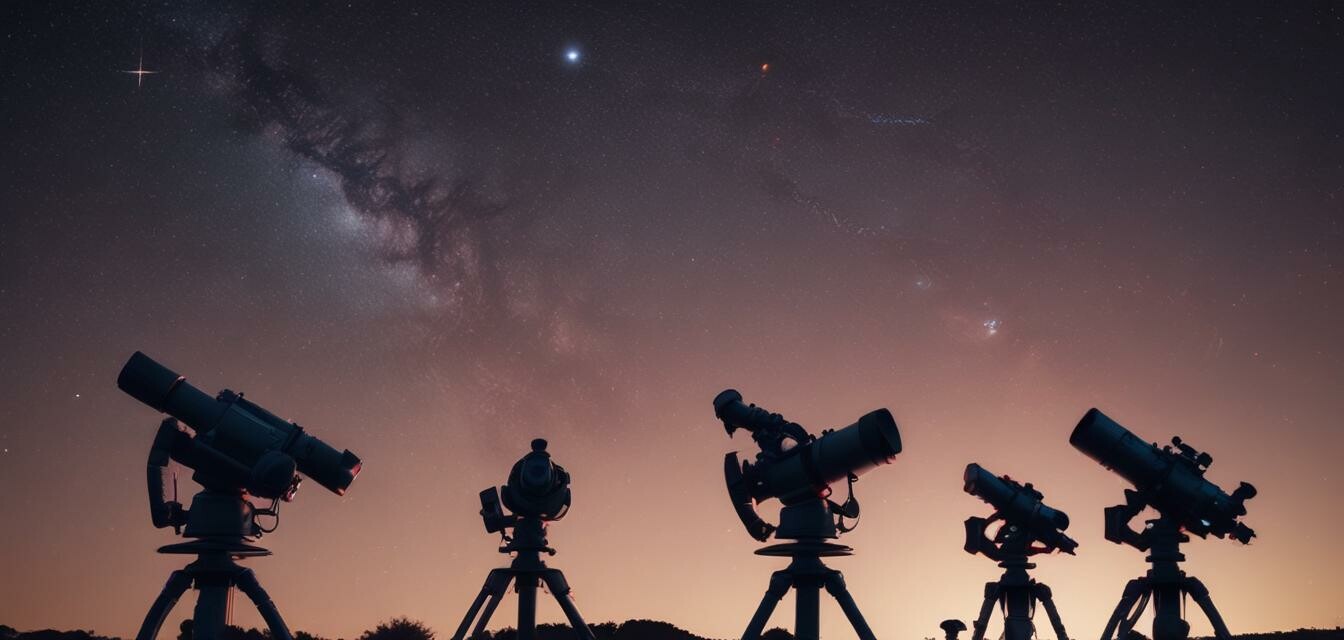
Essential Settings for Observing Planets with Telescopes
Key Takeaways
- Understanding different telescope types enhances your viewing experience.
- Optimal settings can dramatically improve planet observation clarity.
- Using quality accessories is essential for successful stargazing.
- Regular maintenance of your telescope helps maintain its performance.
- Familiarity with your equipment can aid in troubleshooting common issues.
When it comes to observing planets through telescopes, having a solid understanding of the essential settings can significantly enhance your experience. This guide will walk you through the optimal configurations and tips that can improve the clarity and detail of what you see in the night sky.
Types of Telescopes
Before we dive into the settings, let’s briefly explore the different types of telescopes available for planetary observation:
| Telescope Type | Description | Best For |
|---|---|---|
| Refractor Telescopes | Uses lenses to bring light to a focus. | Sharp images of planets and the moon. |
| Reflecting Telescopes | Uses mirrors to collect light. | Large apertures for deep space viewing. |
| Catadioptric Telescopes | Combines lenses and mirrors for compact designs. | Versatile and portable, great for all types of observation. |
Optimal Telescope Settings
Once you've chosen your telescope, the next step is to configure its settings correctly. Here are the essential settings you should consider:
Aperture Size
The aperture of your telescope is crucial for gathering light and resolving details. A larger aperture allows for better clarity, especially for observing distant planets.
Focusing Mechanism
Ensure that your telescope is properly focused. Use the fine adjustment to toggle between sharpness and clarity. A well-focused view will significantly improve your observation of planetary features.
Magnification Power
Finding the right magnification is key in planet observation:
- Low Magnification (20x - 50x): Ideal for broader views and finding planets.
- Medium Magnification (50x - 100x): Great for detailed observations.
- High Magnification (100x+): Useful for exploring details but requires stable atmospheric conditions.
Importance of Accessories
Incorporating quality accessories can augment your observing experience:
- Eyepieces: Experiment with different types for varied views.
- Filters: Planetary filters can enhance clarity by reducing glare.
- Barlows: These can increase the focal length, offering more magnification without needing additional eyepieces.
Finding the Best Time for Observation
Timing is everything in planet observation. Consider these factors to optimize your viewing experience:
- Choose nights with minimal atmospheric turbulence.
- Avoid full moons; they can wash out faint details.
- Plan your observations around planetary alignments or events for spectacular views.
Maintenance Tips for Your Telescope
Regular maintenance is essential for optimal performance:
- Clean lenses and mirrors carefully to avoid scratches.
- Store your telescope in a dry, safe place to protect it from dust and moisture.
- Check adjustments regularly to keep your device functioning smoothly.
Troubleshooting Common Issues
Even seasoned astronomers encounter challenges. Here’s how to troubleshoot common problems:
- Blurry Images: Check focus and ensure that no dust or debris is on the lens.
- No Viewing Details: Adjust magnification or try a different eyepiece.
- Collimation Issues: Set your telescope up according to instructions to ensure everything is aligned correctly.
Conclusion
Enhancing your planetary observation experience is all about understanding the essential settings and making the most of your equipment. By focusing on factors such as telescope type, optimal settings, and the right accessories, you can take your stargazing to the next level. For further insights, check out our articles on Buying Guides or explore the newest trends in astronomy.
Pros
- Improved clarity and detail in planet observation.
- Broad knowledge of equipment enhances overall experience.
Cons
- Requires time and patience to master the techniques.
- Some advanced settings may be challenging for beginners.